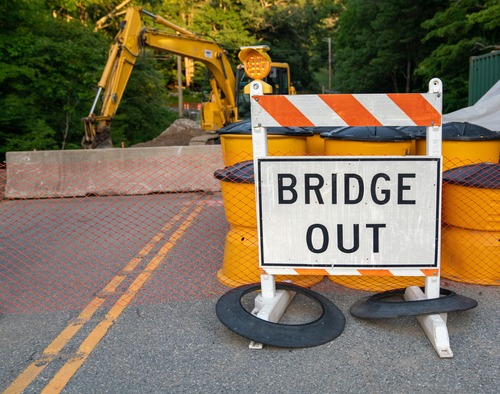
South Carolina’s Section of the American Society of Civil Engineers issued their first state report card Wednesday, giving the state’s infrastructure a cumulative D+.
The grade falls below the national grade of C-. After analyzing eight categories of infrastructure — aviation, bridges, dams, drinking water, ports, roads, transit and wastewater — the group rated only bridges and ports above a D level.
The report gave South Carolina roads a grade of D, and bridges a grade of C. With the highest fatality rate in the U.S. at 1.72 per 100 million vehicle miles traveled, more than 50 percent of the state’s roads were rated in poor condition. Nearly 11 percent of the state’s bridges are structurally deficient — more than the national average of 7.5 percent — and more bridges in the state are in fair condition (47 percent) than in good condition (45 percent). The transportation network, the report said, faces an estimated funding gap of $43 billion by 2040.
But, the report said, the state has taken steps to improve its transportation network, upping its gas tax by 12 cents per gallon from 2017 to 2023 to raise more than $625 million in new annual revenue, and adopting the Target Zero vision for reducing road fatalities.
South Carolina Transportation Secretary Christy Hall said the S. C. Department of Transportation is addressing many of the issues outlined in the report and that the data in the report is old.
“During the past five years, our state leaders have made significant new investments in repairing South Carolina’s roads and bridges, which have suffered from 30 years of underfunded maintenance,” Hall said in a statement. “As promised under its 10-Year Plan, SCDOT is resurfacing aging roadways, replacing and rehabilitating structurally deficient bridges, widening key portions of our interstates, and making our most dangerous rural roads safer. While ASCE’s pavement condition rating of our roads is based on 2018 data, SCDOT continues making significant progress each year. In fact, we’re ahead of schedule in delivering needed improvements to the state’s transportation network.”
The highest grade in the report went to the state’s ports. S.C. Ports is a top-10 container port in the U.S., responsible for 1-in-10 of the state’s jobs and more than $63 billion in economic output for the state. Cargo volumes for ports have doubled in the past 10 years, leading to the South Carolina Ports Authority, the state, the federal government and industry partners investing more than $2.6 billion into port facilities that will double container capacity at the Hugh K. Leatherman, Sr. Terminal in Charleston and deepen the harbor there by 52 feet allowing mega container ships to access terminals at any time, regardless of tides.
The report suggested several measures to raise the grades, including full funding by the federal government of authorized infrastructure programs; making the best use of taxpayer dollars by designing, operating, maintaining and expanding infrastructure through consensus-based codes and standards that focus on resilience and life cycles costs; and establishing funding and grants to assist programs that would enhance the quality of public service in the drinking water, wastewater, regional transit, and aviation sectors.